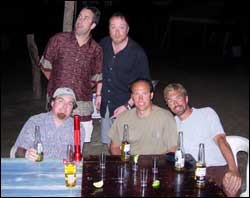New Category! Opposite of my previous new category Rants which is for bitching and moaning, this category Guide to Life is about solutions and lessons learned, forgotten, and re-learned in 40 years of living. Pay close attention to this category, there will be a test.
During the four years that I was self-employed and working at home my commute was basically from upstairs to downstairs. It was nice. But I have once again become a commuter, heading roughly 35 miles from my Northern Virginia home into Washington, DC. I’m fortunate to still be able to work from home a couple of days a week, but on the days that I do go in the commute has been worse than I can ever recall. Last Friday evening, it took me three hours to get home. Last week, heading into the city in the late afternoon, it took me two hours to cover a distance I should have done in 45 minutes. It sucks.
Happily, last week I re-discovered slug lines. Slugging is a term that describes informal, ad hoc car pools arranged for single trips into and out of Washington, DC so that the driver has the benefit of having enough occupants in their car that they can ride in the High Occupancy Vehicle (HOV) lanes, and the passengers or “slugs” get a free ride to or from work. For a few years I regularly slugged my way into work.
Last week after crossing the Key Bridge and passing through Rosslyn, I spotted the tell-tale line of slugs, looking for a southbound ride. The HOV restrictions are lifted at 6pm, but grabbing two slugs by 5:20 found us entering the slug lanes by the Pentagon shortly after. In no time we were homebound at 70 mph, flying past the more slug-like traffic in the regular lanes. The next day, I picked up three slugs at 5:30, and dropped them off at the Potomac Mills Mall commuter lot at about 6:15. It was beautiful.
Thank you slugs, I’ll be looking for you on my way home.
Like this:
Like Loading...






